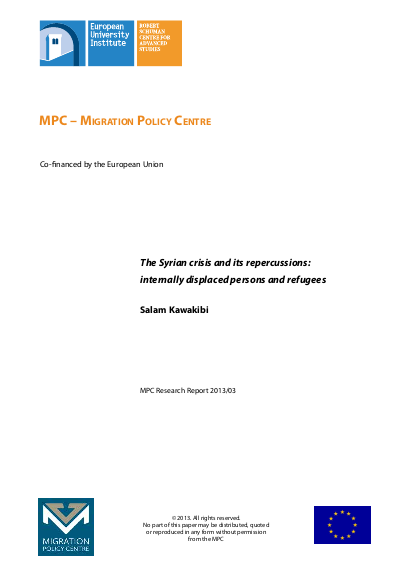
Given the extreme violence worked against the civil population, which have seen the destruction of houses and food and water provisions, today there are three forms of interior displacement:
- Families that have been able to find accommodation with friends or relatives.
- Families that have free or paid individual accommodation. These lodgings are often unsanitary. It is common to find several families living together.
- Families who are living out of schools and public buildings.
It is important to note that many families have been displaced several times. There are naturally consequences in terms of health and education, which particularly affect children. The main consequence of violent displacement is the disintegration of family structures. Part of this relates to the increase in violence within families resulting from proximity, tensions, anxieties and the violence endured by adults. In the two situations, that of the refugees in camps outside the country and that of displaced people inside the country, children evidently have the same basic needs as adults regarding security, health and nutrition. But children also have other special needs, which are worth stressing. We can classify their needs into four categories:
- Medical needs: displacement, lack of hygiene, malnutrition, poor health levels in their temporary homes and stress linked to violence are all direct causes of numerous illnesses. Infants are particularly affected by stress and malnutrition from the mother during and after pregnancy. Finally, children should be the object of a vaccination campaign for the most common illnesses.
- Nutritional needs: the major difficulty is in obtaining sufficient quantities of milk for babies, which is adapted to the large number of very young children. This kind of milk is evidently more expensive than ordinary milk or bread, which efficiently nourishes a lot of older children.
- Schooling needs: an important proportion of Syrian children went without education following the outbreak of war, either because schools hosted displaced people and their teachers had left, or because of displacement(s). Some schools were set up in the camps, but with little funding and with a chronic lack of teachers.
- Psychological needs: these needs are the ones least taken into account. Yet all areas affected by violence, report the psychological distress of children. Common symptoms include: incontinence, fear, and repeated crying attacks. In addition, amongst the hundreds of raped adolescents, a certain number of young girls find themselves pregnant at 14 or 15 years of age.